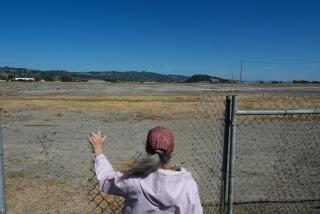West Coast radiation from Fukushima disaster poses no risk, experts say
Radiation detected off the U.S. West Coast from the Fukushima Daiichi nuclear plant in Japan has declined since the 2011 tsunami disaster and never approached levels that could pose a risk to human health, seafood or wildlife, scientists say.
Experts have been trying to dispel worries stemming from a burst of online videos and blog posts in recent months that contend radiation from Fukushima is contaminating beaches and seafood and harming sea creatures across the Pacific.
Those assertions are false and the concerns largely unfounded, scientists and government officials said last week, because Fukushima radionuclides in ocean water and marine life are at trace levels and declining â so low that they are trivial compared with what already exists in nature.
âThere is no public health risk at California beaches due to radioactivity related to events at Fukushima,â the California Department of Public Health said in a statement.
Concentrations of radioactive cesium from the nuclear plant that were detected in the tissue of bluefin tuna, which migrate from waters near Japan across the Pacific to the coast of California and Mexico, were very low to begin with and have been falling since 2011, said Nicholas Fisher, a professor of marine science at Stony Brook University.
âThe dose is measurable but itâs extremely low,â said Fisher, an expert on marine radioactivity.
Even at its worst in the months after the disaster, the dose of radioactivity that Fisherâs lab found in tuna caught off California was far lower than what people are exposed to from medical X-rays or eating bananas or other potassium-rich foods, which contain naturally occurring radioactive isotopes.
The latest concerns are mostly driven by online videos, blogs and social media â including a post titled â28 Signs That the West Coast Is Being Absolutely Fried With Nuclear Radiation From Fukushima.â A video posted on YouTube last month shows an unidentified man with a Geiger counter detecting elevated radiation levels on a beach in Half Moon Bay, south of San Francisco, and has received more than 650,000 views.
The California Department of Public Health sent inspectors to the beach shown in the video, and their tests found similarly elevated radiation levels. But their analysis indicates they are naturally occurring â probably from minerals in the sand â and not associated with Fukushima.
Kim Martini, an oceanographer at the University of Washington, noticed a surge in outrageous worries about radiation in Seattle last fall, including people who were afraid to go to the beach and stopped eating seafood.
âEvery single environmental issue was being blamed on Fukushima,â she said. âAnd I thought thereâs no way that can be true.â
Since then she and other scientists have been posting information on the blog Deep Sea News, with posts including âIs the sea floor littered with dead animals due to radiation? No.â
A magnitude 9.0 earthquake off Japan on March 11, 2011, triggered a series of tsunamis that crippled the Fukushima Daiichi nuclear power plant, releasing radiation into the ocean and atmosphere. Studies show that leaks from the facility continue to send radionuclides into the sea. But they dilute quickly in ocean water, scientists say.
Once those contaminants disperse across the Pacific Ocean and reach the West Coast, their concentration will be many thousands of times lower and not of concern, according to an online FAQ by Ken Buesseler, a marine scientist at the Woods Hole Oceanographic Institution.
âThis is not to say that we should not be concerned about additional sources of radioactivity in the ocean above the natural sources, but at the levels expected even short distances from Japan, the Pacific will be safe for boating, swimming, etc.,â Buesseler wrote.
State and federal agencies boosted radiation monitoring after the 2011 disaster but returned to normal after data showed the slightly elevated levels in air and milk were declining. They have detected only trace amounts of radiation from Fukushima, well below what would be a public health concern.
For now, those observations have not quelled the conspiracy theories.
The Southern California environmental group Heal the Bay has fielded such a swell of alarmist calls, emails and Facebook inquires that its staff posted an online Q&A.
âWe understand why people are concerned,â said Matthew King, a spokesman for the group. âMany staffers are surfers and in the water each week, and many love to eat seafood and sushi, so itâs only human nature to be a bit worried. But like everything else we do, we are guided by the best available science.â
Fisher, the marine scientist, thinks one factor behind those worries is the publicâs poor grasp of how radiation works.
âI think itâs fear of the unknown,â said Martini, the Seattle oceanographer. âRadiation is kind of scary. You donât really see it and you canât detect it using your normal senses.â
âThere are consequences of this disaster,â she said, âbut the problem is really only in Japan.â







